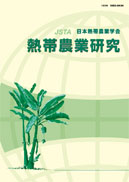Volume 1, Issue 2
Displaying 1-7 of 7 articles from this issue
- |<
- <
- 1
- >
- >|
Original Article
-
2008 Volume 1 Issue 2 Pages 55-63
Published: 2008
Released on J-STAGE: March 05, 2013
Download PDF (1779K)
Symposium
-
2008 Volume 1 Issue 2 Pages 64
Published: 2008
Released on J-STAGE: March 05, 2013
Download PDF (161K) -
2008 Volume 1 Issue 2 Pages 65-68
Published: 2008
Released on J-STAGE: March 05, 2013
Download PDF (602K) -
2008 Volume 1 Issue 2 Pages 69-72
Published: 2008
Released on J-STAGE: March 05, 2013
Download PDF (808K) -
2008 Volume 1 Issue 2 Pages 73-77
Published: 2008
Released on J-STAGE: March 05, 2013
Download PDF (788K) -
2008 Volume 1 Issue 2 Pages 78-82
Published: 2008
Released on J-STAGE: March 05, 2013
Download PDF (896K)
Research Meeting
-
2008 Volume 1 Issue 2 Pages 83-89
Published: 2008
Released on J-STAGE: March 05, 2013
Download PDF (1536K)
- |<
- <
- 1
- >
- >|
